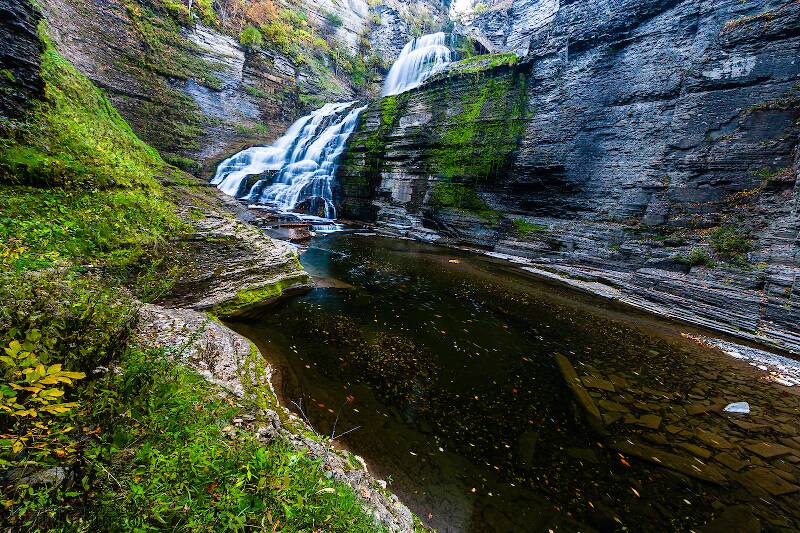
Blue-winged Olives
Baetis
Tiny Baetis mayflies are perhaps the most commonly encountered and imitated by anglers on all American trout streams due to their great abundance, widespread distribution, and trout-friendly emergence habits.
Featured on the forum

I was not fishing, but happened to be at an unrelated social event on a hill above this tiny creek (which I never even saw) when this stonefly flew by me. I assume it came from there. Some key characteristics are tricky to follow, but process of elimination ultimately led me to Sweltsa borealis. It is reassuringly similar to this specimen posted by Bob Newell years ago. It is also so strikingly similar to this nymph from the same river system that I'm comfortable identifying that nymph from this adult. I was especially pleased with the closeup photo of four mites parasitizing this one.

Troutnut is a project started in 2003 by salmonid ecologist Jason "Troutnut" Neuswanger to help anglers and
fly tyers unabashedly embrace the entomological side of the sport. Learn more about Troutnut or
support the project for an enhanced experience here.
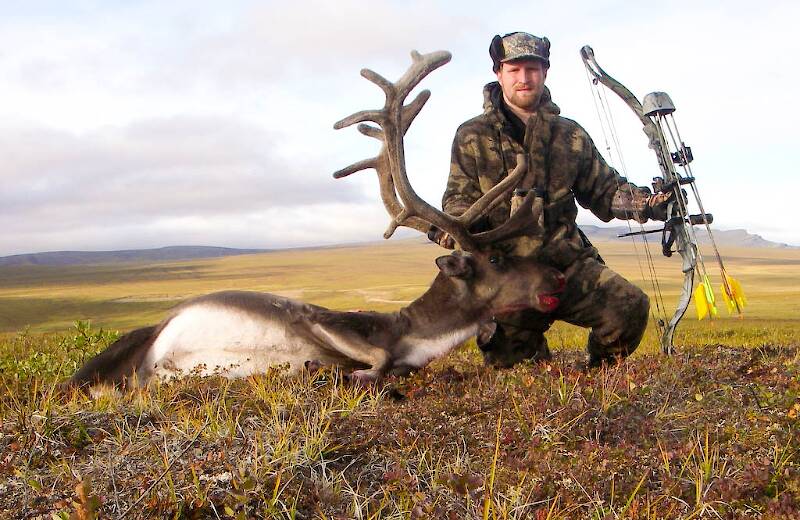
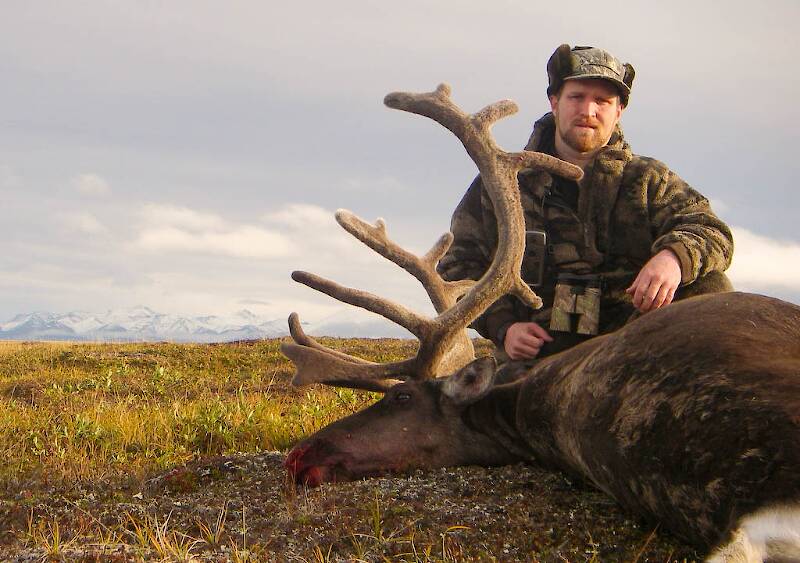
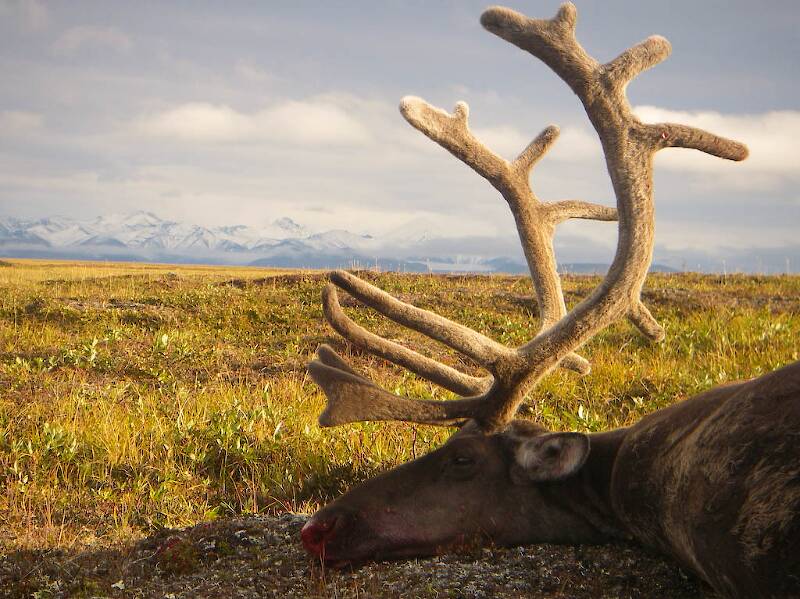
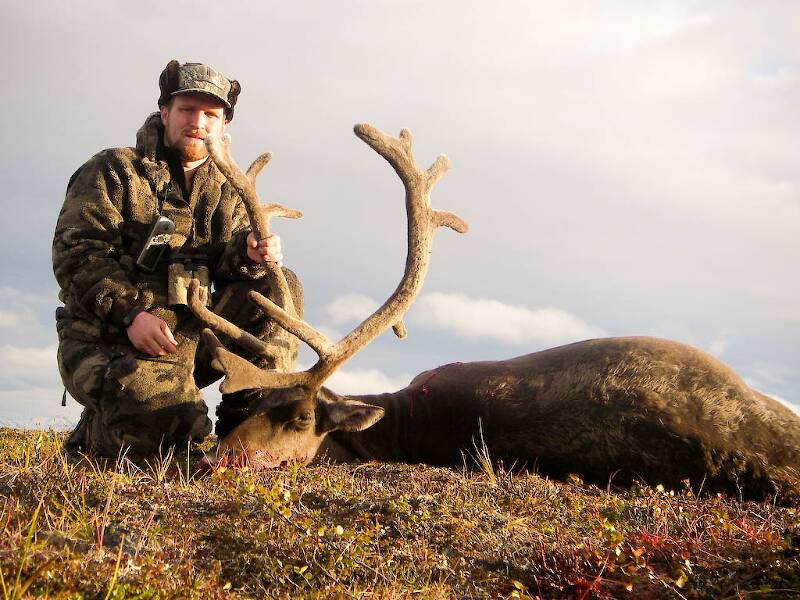
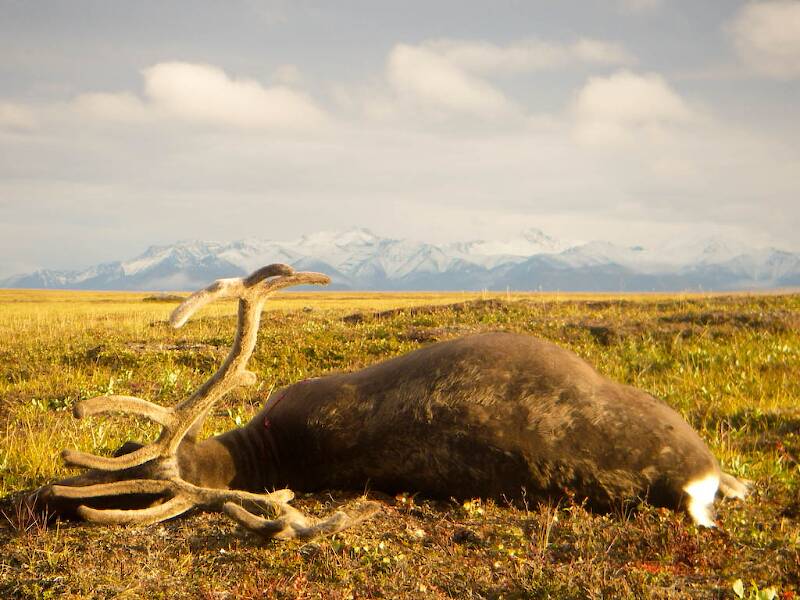
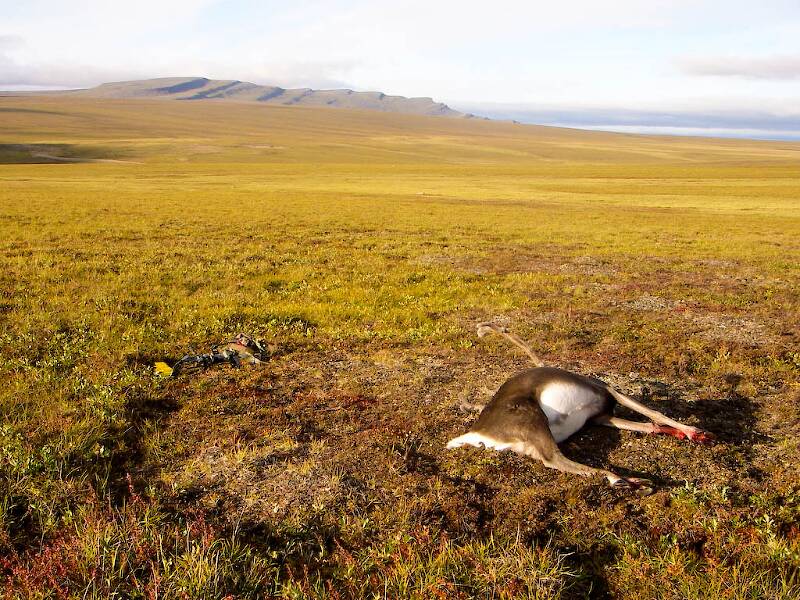
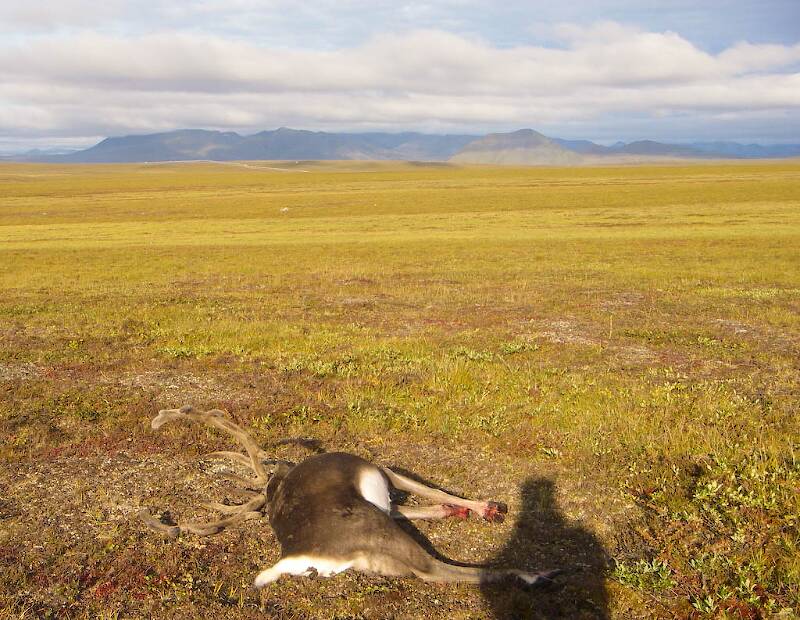
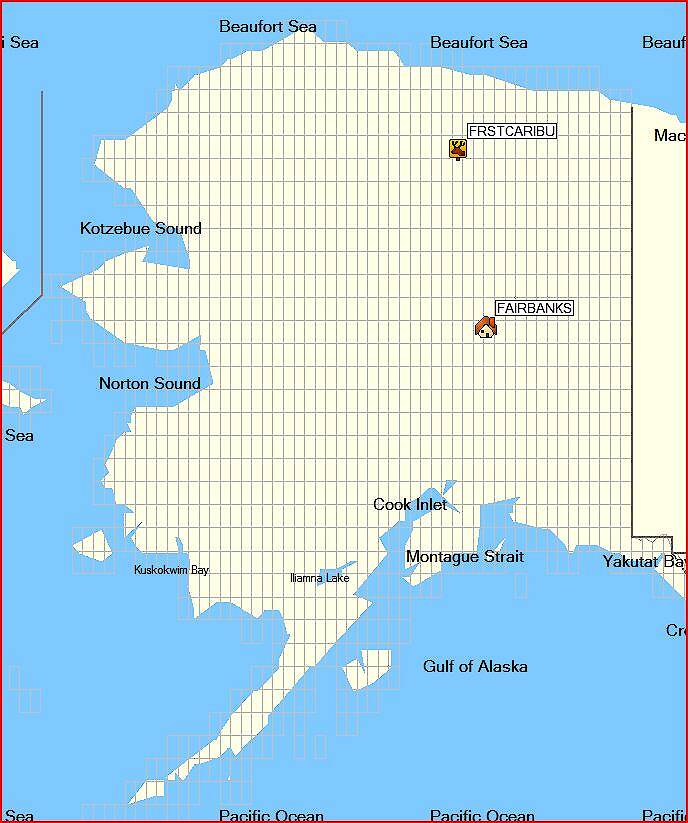
Troutnut on Aug 12, 2008August 12th, 2008, 7:36 pm EDT
Spoiler alert: I'm planning to post a much more detailed story of the hunt within a few days. If you'd rather read that one without knowing what happens, then you should skip this abbreviated version of the story.
Saturday evening I left Fairbanks to drive 350 miles up a mostly gravel road to Alaska's North Slope and bowhunt caribou on the open tundra. I crossed barren Atigun Pass around midnight, and drove the last couple hours into prime caribou country in the morning.
My first stalk wasn't a success - I walked half a mile across the spongy mat of tussock-laden moss that is the North Slope tundra, started crawling on my belly toward half a dozen bedded caribou 80 yards away, then watched helplessly as they got up unprovoked and wandered off in another direction. There's no keeping up with caribou on the tundra. You intercept them where they're going, or you catch them milling around eating or laying down. If they're on the move and you're behind them, it's time to give up. So I did.
I began my second stalk a couple hours later. I had stopped to watch a small group of caribou through my binoculars to check if any were bulls, since cows aren't legal at this time of year. Only after sitting there for a few minutes did I see another lone caribou on the other side of the road, a few hundred yards away. A feeding bull. I got out and started a two-and-a-half hour stalk across open, featureless tundra, without so much as a bush for cover. I was never concealed and could move only when it looked away or put its head down. The stalk was full of complications and tests of patience, and it stretched on for three quarters of a mile. I ended it with an awful shot -- a result of misjudging the size of the animal and distance over that open ground -- but the shot was lucky and it left the caribou with just 3 usable legs. It was sufficiently hindered that I could get within close range again, eventually, and finish the job with a lung shot from 10 yards out.
The kill shot came around 6:20pm, a mile from the road. I had to go back for all my field-dressing stuff, and I finished skinning the caribou and taking the meat off around 3:00am, needing no flashlight in the high Arctic summer despite the time and the overcast sky. I had the first load back at the car at 5:00am, and had to get some sleep. It was a little more than 24 hours after the kill when I finally returned to the car with the last load, and the antlers.
Right now I'm working up the meat for freezing. When I have time, I'll post the story in more detail.
Saturday evening I left Fairbanks to drive 350 miles up a mostly gravel road to Alaska's North Slope and bowhunt caribou on the open tundra. I crossed barren Atigun Pass around midnight, and drove the last couple hours into prime caribou country in the morning.
My first stalk wasn't a success - I walked half a mile across the spongy mat of tussock-laden moss that is the North Slope tundra, started crawling on my belly toward half a dozen bedded caribou 80 yards away, then watched helplessly as they got up unprovoked and wandered off in another direction. There's no keeping up with caribou on the tundra. You intercept them where they're going, or you catch them milling around eating or laying down. If they're on the move and you're behind them, it's time to give up. So I did.
I began my second stalk a couple hours later. I had stopped to watch a small group of caribou through my binoculars to check if any were bulls, since cows aren't legal at this time of year. Only after sitting there for a few minutes did I see another lone caribou on the other side of the road, a few hundred yards away. A feeding bull. I got out and started a two-and-a-half hour stalk across open, featureless tundra, without so much as a bush for cover. I was never concealed and could move only when it looked away or put its head down. The stalk was full of complications and tests of patience, and it stretched on for three quarters of a mile. I ended it with an awful shot -- a result of misjudging the size of the animal and distance over that open ground -- but the shot was lucky and it left the caribou with just 3 usable legs. It was sufficiently hindered that I could get within close range again, eventually, and finish the job with a lung shot from 10 yards out.
The kill shot came around 6:20pm, a mile from the road. I had to go back for all my field-dressing stuff, and I finished skinning the caribou and taking the meat off around 3:00am, needing no flashlight in the high Arctic summer despite the time and the overcast sky. I had the first load back at the car at 5:00am, and had to get some sleep. It was a little more than 24 hours after the kill when I finally returned to the car with the last load, and the antlers.
Right now I'm working up the meat for freezing. When I have time, I'll post the story in more detail.
Jason Neuswanger, Ph.D.
Troutnut and salmonid ecologist
Troutnut and salmonid ecologist
Falsifly on Aug 13, 2008August 13th, 2008, 4:57 am EDT
Spoiler alert: I'm planning to post a much more detailed story of the hunt within a few days. If you'd rather read that one without knowing what happens, then you should skip this abbreviated version of the story.
Anxiously awaiting.
Falsifly
When asked what I just caught that monster on I showed him. He put on his magnifiers and said, "I can't believe they can see that."
When asked what I just caught that monster on I showed him. He put on his magnifiers and said, "I can't believe they can see that."
Shawnny3 on Aug 18, 2008August 18th, 2008, 3:12 am EDT
A huge congratulations, Jason. I'll resist reading the shorter story in anticipation of the longer version.
-Shawn
-Shawn
Jewelry-Quality Artistic Salmon Flies, by Shawn Davis
www.davisflydesigns.com
www.davisflydesigns.com
Quick Reply
Related Discussions
Topic
Replies
Last Reply
21
Feb 19, 2013
by Gutcutter
by Gutcutter

